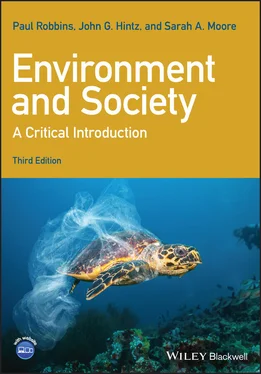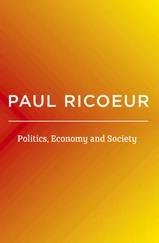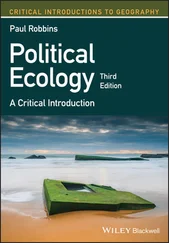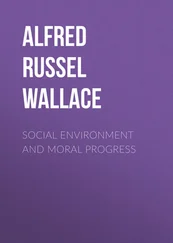Nor is any of this to say that unlimited numbers of people lead to unlimited productive capacity and endless plenty, although the view has been described as “cornucopian” (literally “horn of plenty” from the Greek) by its critics. It does raise serious questions, however, about the problems of assuming natural limits. If population growth does not always lead to scarcity, or if it sometimes even results in increased resources, how useful is a Malthusian perspective?
Limits to Population: An Effect Rather than a Cause?
Beyond this, recent trends in population have made some of the pronouncements and assumptions of population-centered thinking moot. Specifically, the rate of population growth around the world has fallen precipitously in the past few years. Some areas are indeed experiencing negative growth. This should be encouraging for Malthusians. But more profoundly, it raises a basic question about population: Is population a social driver of environmental change or is it actually the product or outcome of social and environmental circumstances and conditions?
Consider the following: Population growth rates, which measure (as a percentage) the rate of natural increase of the total number of people on the Earth, peaked in the period between 1960 and 1970 (Figure 2.3). In the period since, they have only declined, slowly approaching a rate below 1%, nearing a state of zero population growth(ZPG). Whatever one might think about the danger that population (versus affluence, for example) presents for the environment, one must wonder what causes such a change.
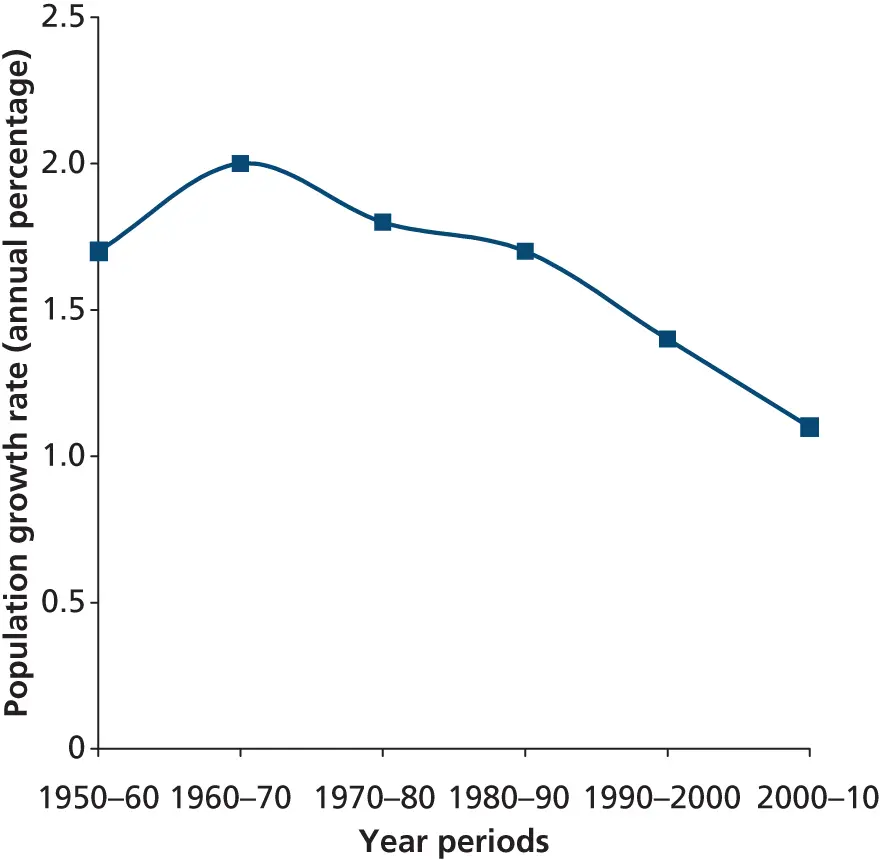
Figure 2.3 Global population growth rates. Population growth rates peaked in the 1960s and have steadily and continuously declined since then.
Zero Population GrowthA condition in a population where the number of births matches the number of deaths and therefore there is no net increase; an idealized condition for those concerned about overpopulation
What makes population growth decline? What are the implications for human–environment relations in a world where population, while continuing to grow, is likely to reach stability in the next 50 years?
Development and Demographic Transition
The most obvious precedent for this global shift comes from the demographic history of Europe in the nineteenth and early twentieth centuries. There, population went from a relatively stable state before 1800 to very high levels of growth in the 1800s, followed by a leveling off, and indeed a current state of population decline in many countries. The drivers of this trend can be broken down more carefully. We can examine the specific rate of births and deaths in Europe (or anywhere else) to provide clues as to what happened.
In traditional agrarian societies, the death rate(typically measured in numbers of deaths per 1000 people in a population in a year) and the birth rate(births per 1000 people per year) vary somewhat, but are both relatively high (around 40 or 50 per thousand). They also typically offset each other so that annually no more people are born than die, leading to low or negligible population growth.
In the European case, the initial growth of population was caused by a decline in the overall death rate of the population. The death rate fell largely in response to better medicine and health care, which led to fewer deaths, especially of infants, women in childbirth, and other historically vulnerable populations. Going from a high of around 40 or 50 deaths per thousand to fewer than 15 deaths per thousand, more people lived, and lived longer, during the nineteenth and twentieth centuries in Europe than ever before. If the death rate falls and the birth rate remains unchanged, population growth occurs, and often at an exponential rate. As long as birth rates are higher than death rates, more people enter a population than leave it. Europe grew as a result.
Birth RateA measure of natural growth in a population, typically expressed as the number of births per thousand population per year
Death RateA measure of mortality in a population, typically expressed as the number of deaths per thousand population per year
Demographic Transition ModelA model of population change that predicts a decline in population death rates associated with modernization, followed by a decline in birth rates resulting from industrialization and urbanization; this creates a sigmoidal curve where population growth increases rapidly for a period, then levels off
In the years of the late nineteenth and early twentieth centuries, birth rates also began to fall. There are many reasons for this decline, and some remain a matter of debate. Nonetheless, as people moved into cities, the demand for family farm labor fell while the costs of raising and educating children increased. This led families to have fewer children and the birth rate fell, from a high between 40 or 50 births per thousand to a low closer to 10 or 15. Once the birth and death rates came to match, population growth halted. In many countries, like Russia, the death rate is currently higher than the birth rate, leading to a decrease in population. Current growth rates are mapped in Figure 2.4 and show great international variation in population growth.

Figure 2.4 Population growth rates worldwide by country. Source : Data from Population Reference Bureau, http://www.prb.org/DataFinder/Topic/Rankings.aspx?ind=250
The demographic transition modelor DTM (sketched in Figure 2.5) is an abstract representation of this process that is often used to describe what happened in Europe during this period. Generally it assumes that some form of economic development and change from agricultural to industrial society drives the population toward a period of high population growth, followed by a cessation of growth.
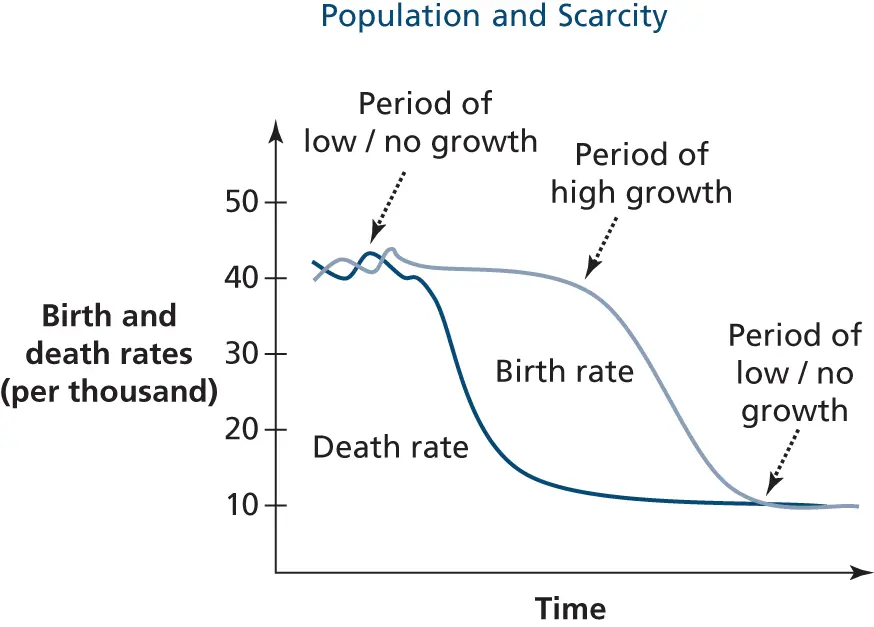
Figure 2.5 The demographic transition model. In theory, falling death rates lead to population growth, but as birth rates fall thereafter, the rate of growth slows, eventually ceasing when the two reach equilibrium.
It is tempting to use the DTM to predict what might happen in other parts of the world and in other periods of history. After all, the processes that accompanied demographic transition in Europe are also ongoing in other parts of the globe. Urbanization, decreased proportion of the population in farming, changes in jobs, and the expenses and benefits related to having children are all facts of life in China, India, and much of Africa and Central and South America, although they happen at different times and under different conditions.
For demographers, there is a parallel expectation of demographic transition (Newbold 2010). Human pressure on the environment, it might similarly be predicted, will also cease growing (assuming that affluence and consumption do not change for each person!).
Women’s Rights, Education, Autonomy, and Fertility Behavior
However, mounting evidence from around the world demonstrates that population and resource transitions are far more diverse and have far more drivers and explanations than the DTM might suggest. In some countries or regions, population growth has fallen dramatically, for example, in the absence of significant economic growth and change. The state of Kerala in southern India is a paramount example of such an outcome. In the 1950s, this small rural state had the highest population growth rate in India but by the 1990s it was among the lowest, falling from 44 per thousand in 1951 to 18 per thousand in 1991 (Parayil 2000). How was this transition achieved, since – contrary to the DTM – the population remains largely rural and manages with a lower than average gross domestic product per capita, even lower than other states within India?
Читать дальше
